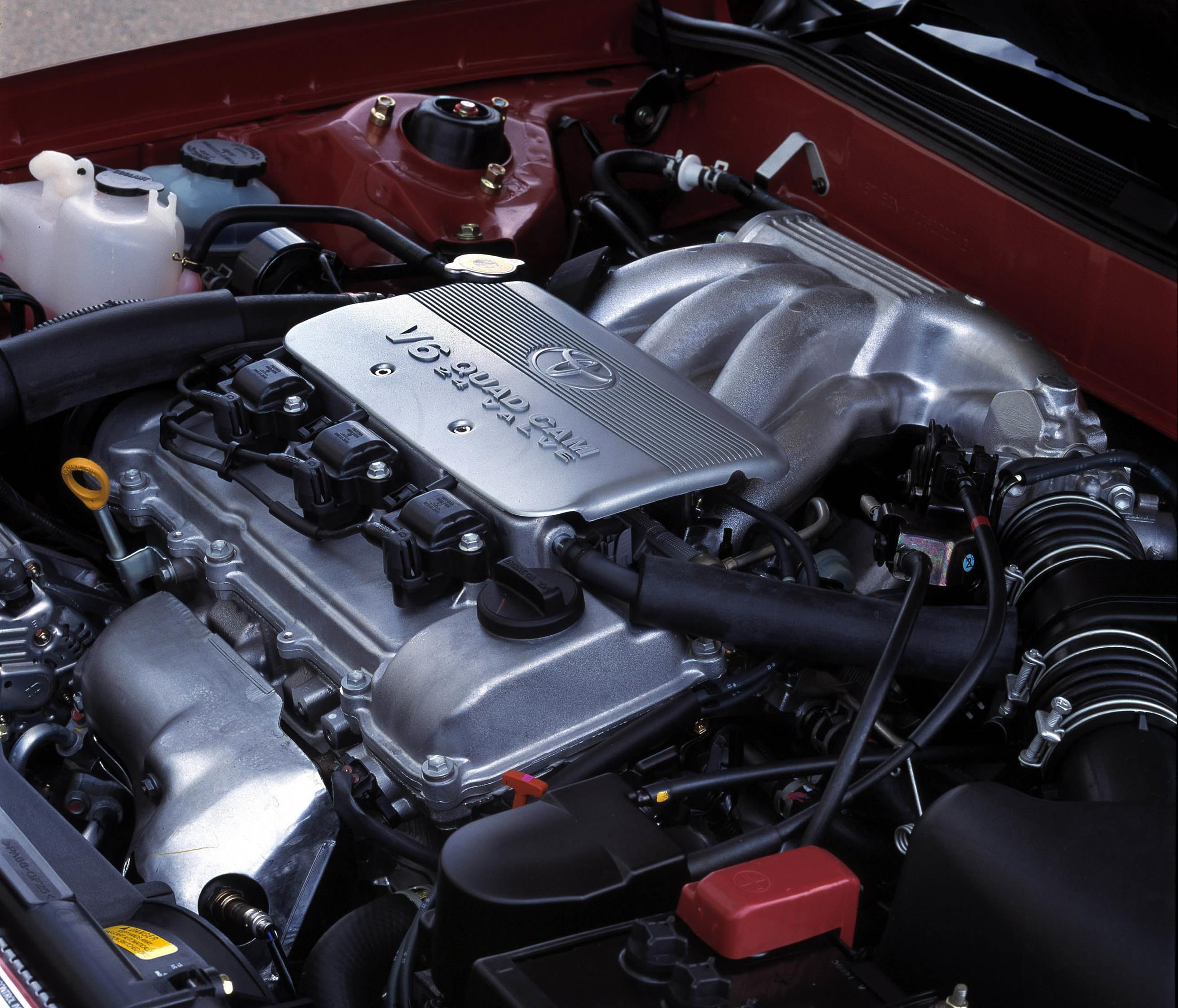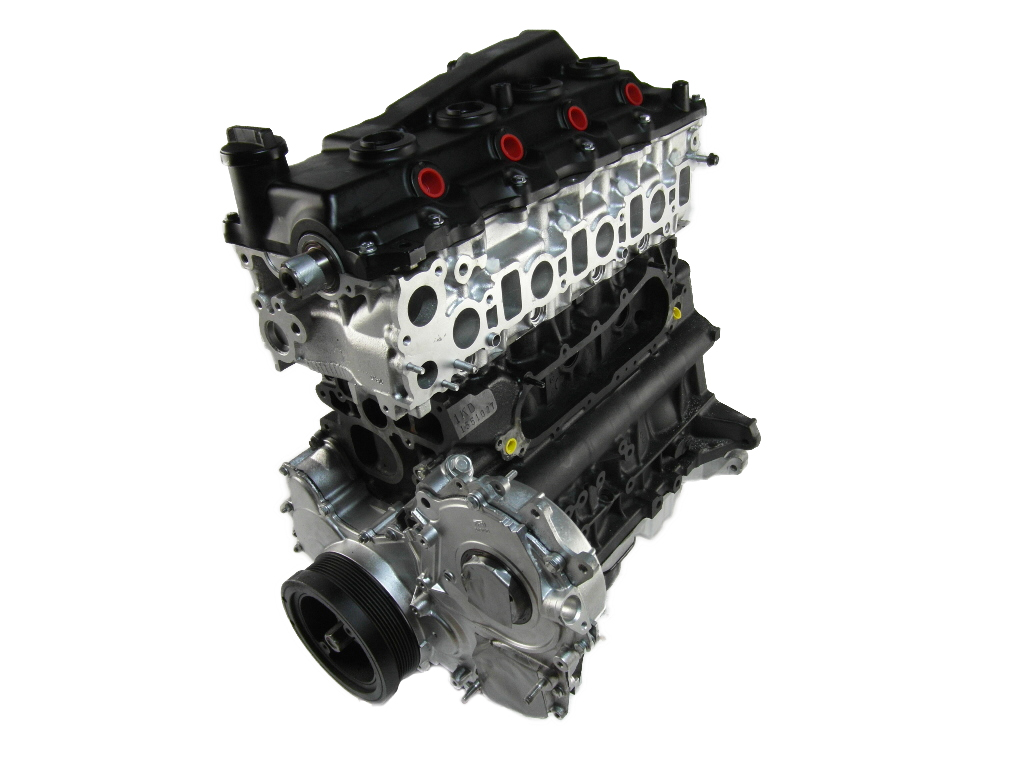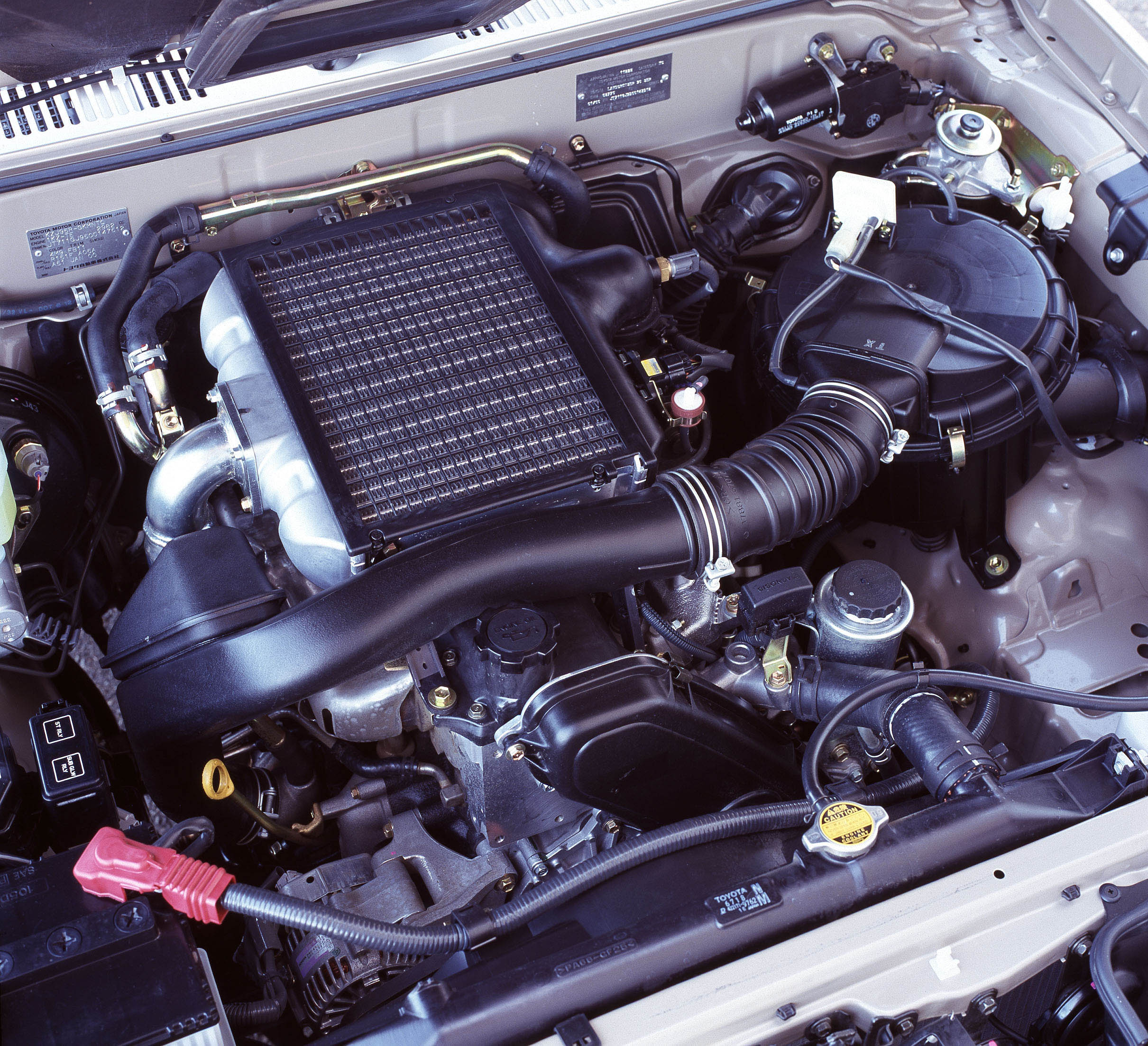Introduction
Produced from 2005, the Lexus 2GR-FSE was a 3.5-litre V6 petrol engine that featured direct and port injection. For Australia, the 2GR-FSE was first offered in the Lexus S190 GS 450h, but subsequently introduced in the XE20 IS 350, L10 GS 350, XE30 IS 350 and RC 350.
For the non-hybrid applications of the 2GR-FSE engine, peak outputs were 233 kW at 6400 rpm and 378 Nm at 4800 rpm; 90 per cent of peak torque (340 Nm), however, was available from 2000 rpm.
The 2GR-FSE engine had a service weight of 177 kg.
| Engine | Trans. | Years | Peak power | Peak torque | |
|---|---|---|---|---|---|
| Lexus S190 GS 450h | 3.5-litre petrol V6 | CVT | 2005-12 | 218kW at 6400rpm | 368Nm at 4800rpm |
| Lexus XE20 IS 350 | 3.5-litre petrol V6 | 6sp auto | 2010-13 | 233kW at 6400rpm | 378Nm at 4800rpm |
| Lexus RC 350 | 3.5-litre petrol V6 | 8sp auto | 2014-on | 233kW at 6400rpm | 378Nm at 4800rpm |
| Lexus L10 GS 350 | 3.5-litre petrol V6 | 6sp auto | 2012-13 | 233kW at 6400rpm | 378Nm at 4800rpm |
| 8sp auto | 2013-on | ||||
| Lexus XE30 IS 350 | 3.5-litre petrol V6 | 8sp auto | 2013-on | 233kW at 6400rpm | 378Nm at 4800rpm |
2GR-FSE block
With its die-cast aluminium alloy cylinder block, the cylinder banks of the 2GR-FSE engine had a 60-degree ‘V’ angle. The 2GR-FSE engine had 94.0 mm bores and an 83.0 mm stroke for a capacity of 3456 cc; bore pitch was 105.5 (i.e. the distance between the centre of adjacent bores), while cylinder bank offset was 36.6 mm.
Like the related 2GR-FE engine, the 2GR-FSE engine is understood to have ‘spiny type’ cast-iron cylinder liners – the casting exteriors of these liners had irregular surfaces to enhance the adhesion between the liners and the aluminium cylinder block.
Crankshaft, connecting rods and pistons
The 2GR-FSE’s forged steel crankshaft had four journals and five balance weights. The crankshaft bearings were made of aluminium alloy and, like the connecting rod bearings, the lining surfaces were micro-grooved for an optimal amount of oil clearance – this improved cold-engine cranking performance and reduced engine vibration. The crankshaft bearing caps were tightened using four (4) plastic region tightening bolts for each journal.
The 2GR-FSE engine had forged connecting rods which used aluminium bearings. To reduce mass, the connecting rods and caps were made of high-strength steel and nutless-type plastic region tightening bolts. Furthermore, knock pins were used at the mating surfaces of the bearing caps to minimise movement during assembly.
Unlike the 2GR-FE, the 2GR-FSE had hypereutectic aluminium alloy pistons. Since the aluminium alloy had over 16 per cent silicon content, special melting processes were required to super-saturate the aluminium. In addition to strength, the hypereutectic pistons had greater resistance to scuffs and seizure, and generally operated at lower temperatures.
Cylinder head
The 2GR-FSE had an aluminium alloy cylinder head with a two-piece structure in which the head was divided at the cam journals. Like the 2GR-FE, it is understood that the 2GR-FSE engine had a steel-laminate type head gasket.
Camshafts and roller rockers
The 2GR-FSE engine had double overhead camshafts that were made of cast iron alloy. Both the primary and secondary timing chains used pitch roller chains with a pitch of 9.525 mm. The intake camshafts were driven by the crankshaft via the primary timing chain. The exhaust camshafts were driven by the intake camshaft of the respective bank via the secondary timing chain.
The primary timing chain used one chain tensioner (ratchet type with a non-return mechanism), and each of the secondary timing chains for the right and left banks used one chain tensioner. Both the primary and secondary chain tensioners used a spring and oil pressure to maintain proper chain tension at all times. Furthermore, the timing chains were lubricated by oil jets.
The 2GR-FSE engine had roller rocker arms with built-in needle bearings that reduced the friction that occurred between the camshafts and the roller rocker arms (which actuated the valves). The hydraulic lash adjuster – located at the fulcrum of the roller rocker arm – consisted primarily of a plunger, plunger spring, check ball and check ball spring. Through the use of oil pressure and spring force, the lash adjuster maintained a constant zero valve clearance.
Valves and Dual VVT-i
Like the 2GR-FE, the 2GR-FSE engine had four valves per cylinder (two intake and two exhaust) with the following properties –
- Intake valves: 38.0 mm diameters and 10.9 mm valve lift; and,
- Exhaust valves: 32.0 mm diameters and 10.7 mm valve lift.
The ‘dual variable valve timing with intelligence’ (‘Dual VVT-i’) adjusted the intake and exhaust camshafts to optimise the valve overlap period and utilise exhaust pulsation effects to increase cylinder filling at high engine speeds. The system could vary the range of valve overlap from -37 degrees (relative to crankshaft angle) to +35 degrees. Furthermore, the inlet camshafts had 248 degrees of duration and the exhaust camshafts had duration of 244 degrees.
| 2GR-FSE Valve Timing | ||
|---|---|---|
| Intake | Open | -3° to 37° BTDC |
| Close | 71° to 31° ABDC | |
| Exhaust | Open | 64° to 29° BBDC |
| Close | 0° to 35° ATDC | |
- An oil control valve (mounted on the cylinder head); and,
- Vane-type actuators on the ends of the four camshafts. The intake side used a VVT-i controller with three vanes, and the exhaust side used one with four vanes.
The ECU also used signals from the camshaft position sensor and the crankshaft position sensor to detect actual valve timing, thus providing feedback control to achieve the target valve timing.
When the engine stopped, the intake side VVT-i controller was locked on the most retarded angle side by the lock pin, and the exhaust side VVT-i controller was locked on the most advanced angle side.
D-4S (Direct injection 4-stroke gasoline engine Superior)
The 2GR-FSE engine had Lexus’ D-4S injection system which combined direct injection and conventional port injection, and required separate low- and high-pressure fuel systems. Of the injectors,
- Developed in conjunction with Yamaha and produced by Denso, the two-slit direct injectors were positioned at the outer side of the intake valves (on the edge of the combustion chamber). These injectors had two inverted V-shaped slits – each measuring 0.13 mm by 0.52 mm – that produced a dual-fan-shaped spray at a rate of 948 cc per minute at 12 MPa, though it is understood pressure could range from 4 to 13 MPa; and,
- Also produced by Denso, the twelve-hole port injectors were positioned upstream of the intake port, had an injection rate of 295 cc per minute and maximum pressure of 400 kPa. Each injector hole had a 0.19 mm diameter.
Generally, direct injection lowers the tendency to knock such that they can operate at higher compression ratios and increases performance by reducing the charge intake temperature. At low engine speeds and high loads, however, direct injection is inferior to port injection in forming a homogeneous air-fuel mixture where there is little time to form a homogeneous mixture – from the time fuel is injected until ignition occurs – due to mixture stratification in the combustion chamber. To overcome this problem and produce a homogeneous air-fuel mixture, direct injection engines generally use devices such as:
- A tumble intake-port;
- A helical intake-port; or,
- A swirl control valve.
These mechanisms, however, decrease intake-port flow efficiency relative to a port-injected engine and inhibit performance at high engine speeds. For the 2GR-FSE, port injection was used to achieve mixture formation in these conditions without the need for swirl ports or different piston crown shapes.
On start-up, the 2GR-FSE adopted a ‘weak stratified-charge’ strategy whereby the port injector would inject fuel during the expansion and intake strokes before the intake valves opened. Homogeneous charge was introduced when the intake valves opened. During the latter part of the compression stroke, the direct-injector spurted fuel into the cavity in the piston crown, forming ‘weak lean stratified charge’; in the combustion chamber, the air/fuel ratio was around 15:1. The centrally positioned spark plug would ignite the richer mixture during the expansion stroke. This combustion process would retard ignition timing without adverse effects in the engine’s running, enabling higher exhaust temperature to quickly light off the catalyst. Since the cavity in the top of the piston was solely for this weak stratified-charge operation, the cavity itself was only 5.0 mm deep.
At medium or high loads at lower engine speeds, both the direct and port injection systems were used and the injection ratio was continuously varied to create a homogeneous air-fuel mixture to stabilise combustion, improve fuel efficiency and reduce emissions.
When the engine is running under heavy load, direct injection was used – this provided an intake cooling effect by injecting fuel directly to the combustion chamber which improved the efficiency of each charge and enabled the engine to operate at a compression ratio of 11.8:1.
Ignition
The 2GR-FSE engine had a coil-on-plug ignition system, the Toyota/Lexus ‘Direct Ignition System’ (DIS), in which the spark plug cap was integrated with the ignition coil. Positioned in the centre of the combustion chamber, the 2GR-FSE engine used long-reach iridium-tipped spark plugs so that:
- The top of the combustion chamber could be thicker than normal; and,
- The water jacket could be extended near the combustion chamber for better cooling.
Ignition timing was determined by the ECU based on signals from various sensors; the ECU corrected ignition timing in response to engine knocking.
The 2GR-FSE engine had ‘slanted squish’ combustion chambers and a compression ratio of 11.8:1. The firing order was 1-2-3-4-5-6.
Intake
For the 2GR-FSE engine, the intake air chamber was made of plastic and contained an intake air control valve for the Toyota/Lexus ‘Acoustic Control Induction System’ (ACIS). ACIS consisted of:
- A bulkhead to divide the intake manifold into two stages; and,
- An intake air control valve in the bulkhead which opened and closed to vary the effective length of the intake manifold according to engine speed and throttle valve opening angle.
When the engine was running at middle speed under high load, an actuator would close the intake air control valve to increase the effective length of the intake manifold and improve intake efficiency – at medium engine speeds – due to the effect of inlet pulsations. In any condition other than middle speed running under high loads, the intake air control valve was open to shorten the effective length of the intake manifold.
The 2GR-FSE engine had a linkless-type throttle body in which the throttle position sensor and the throttle control motor were integrated. Furthermore, the ‘Electronic Throttle Control System – intelligent’ (ETCS-i) controlled the throttle valve in accordance with the amount of accelerator pedal effort and the condition of the engine
The 2GR-FSE had a thin-wall cast aluminium inlet manifold and Siamese-type intake ports whereby the intake port diameter gradually decreased toward the combustion chamber to optimise airflow speed and intake pulsation.
Exhaust
For the 2GR-FSE engine, the stainless-steel exhaust manifold had a dual-pipe (air gap) structure and a built-in three-way catalytic converter.







